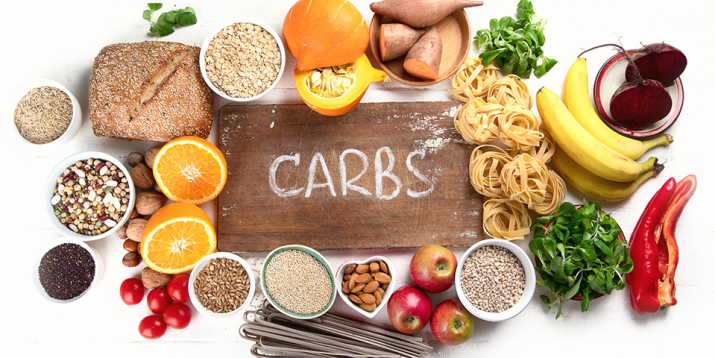Table of Contents

How Many Carbohydrates Can You Have on a Keto Diet?
Are you ready to unlock the secrets of the keto diet and discover just how many carbohydrates you can have? Look no further! This article is your ultimate guide, packed with evidence-based information to help you optimize your carbohydrate consumption. Get ready to dive into the world of keto and learn how to fuel your body with fat instead of carbs. So, if you’re curious to know the exact amount of carbs you can enjoy on a keto diet, keep reading!
The Importance of Carbohydrate Restriction on a Keto Diet
Restricting carbohydrates is vital for achieving ketosis on a keto diet. Ketosis is a metabolic state in which your body primarily burns fat for fuel instead of carbohydrates. By severely limiting your carbohydrate intake, typically to less than 50 grams per day, you force your body to enter ketosis and become a fat-burning machine. This low-carb, high-fat approach helps to stabilize blood sugar levels, reduce hunger, and promote weight loss.
So, how many carbs can you have on a keto diet? The general recommendation is to consume no more than 20-50 grams of net carbs per day. Net carbs are calculated by subtracting the grams of fiber from the total grams of carbohydrates. This allows you to focus on the carbs that have an impact on your blood sugar levels.
It’s important to note that everyone’s carbohydrate tolerance may vary. Some individuals may need to consume fewer carbs to achieve and maintain ketosis, while others may be able to tolerate slightly higher amounts. It’s best to experiment and find the carbohydrate threshold that works best for you.
Determining Your Personal Carb Limit on a Keto Diet
Figuring out your individual carb limit on a keto diet is crucial for achieving and maintaining ketosis. While the general guideline for a keto diet is to consume fewer than 50 grams of carbs per day, your personal carb limit may vary depending on factors such as your activity level, metabolism, and weight loss goals.
To determine your specific carb limit, you can start by gradually reducing your carb intake while monitoring your body’s response. Begin by consuming around 20-30 grams of carbs per day for the first few weeks. Pay attention to how your body feels and whether you are experiencing any signs of ketosis, such as increased energy and reduced cravings.
If you are consistently in ketosis and achieving your desired results, you can experiment with slightly increasing your carb intake. Some individuals may be able to tolerate up to 50 grams of carbs per day and still maintain ketosis, while others may need to stick to a lower carb limit.
Monitoring your ketone levels using urine strips or a blood ketone meter can also provide valuable information about your carb tolerance. These tools can help you determine how many carbs you can have on a keto diet while still staying in ketosis.
Balancing Carbohydrate Intake With Ketosis on a Keto Diet
To maintain ketosis on a keto diet, it’s important to find the right balance of carbohydrate intake. The primary goal of a keto diet is to switch your body’s primary source of fuel from carbohydrates to fats. This is achieved by significantly reducing your carbohydrate intake and increasing your fat intake. The typical recommendation for carbohydrate intake on a keto diet is to consume no more than 20-50 grams of carbs per day. However, it’s important to note that individual carbohydrate tolerance can vary.
Some individuals may be able to consume slightly more carbs and still maintain ketosis, while others may need to stick to the lower end of the range. It’s recommended to start at the lower end and gradually increase your carb intake if needed, while closely monitoring your ketone levels and overall progress. Remember, the key to success on a keto diet is finding the carbohydrate intake that allows you to stay in ketosis and reap the benefits of this metabolic state.
Adjusting Carbohydrate Intake for Weight Loss on a Keto Diet
If you’re looking to lose weight on a keto diet, it’s important to regularly assess and adjust your carbohydrate intake. The number of carbs you can have on a keto diet varies depending on your individual needs and goals. Generally, most people on a keto diet aim to consume fewer than 50 grams of carbohydrates per day to achieve and maintain a state of ketosis, where the body burns fat for fuel instead of glucose.
To determine your ideal carbohydrate intake for weight loss on a keto diet, it is recommended to start with around 20-30 grams of net carbs per day. Net carbs are calculated by subtracting the fiber content from the total carbohydrate content of a food. This is because fiber is not digested and absorbed by the body, so it does not impact blood sugar levels or kick you out of ketosis.
However, it’s important to note that everyone’s carbohydrate tolerance may vary. Some individuals may need to consume fewer than 20 grams of net carbs per day to achieve ketosis, while others may be able to consume slightly more and still maintain ketosis. It’s important to listen to your body and experiment with different carbohydrate levels to find what works best for you in terms of weight loss and overall well-being.
Managing Carbohydrate Cravings on a Keto Diet
Craving sweets or bread on a keto diet can be challenging to manage. However, there are strategies you can use to help curb those cravings and stay on track with your low-carb lifestyle. Firstly, it’s important to understand that the goal of a keto diet is to limit your carbohydrate intake to a specific range. The exact number of carbs you can have on a keto diet varies depending on factors such as your individual metabolism and weight loss goals. Generally, most people aim to consume less than 50 grams of carbs per day to achieve and maintain a state of ketosis. This is the metabolic state where your body switches from using carbohydrates for fuel to burning fat instead.
To manage carbohydrate cravings, focus on consuming a variety of nutrient-dense foods that are allowed on the keto diet, such as lean proteins, healthy fats, and low-carb vegetables. Additionally, staying hydrated, getting enough sleep, and managing stress can also help reduce cravings. Experimenting with alternative sweeteners and keto-friendly recipes can satisfy your sweet tooth without derailing your progress. Remember, it’s important to consult with a healthcare professional or registered dietitian before making any significant changes to your diet.
Incorporating Fiber-Rich Carbohydrates Into a Keto Diet
When following a keto diet, you can incorporate fiber-rich carbohydrates to support your overall health and digestion. While a typical keto diet is low in carbohydrates, it is still important to consume a sufficient amount of fiber for optimal gut health and regular bowel movements. Fiber-rich carbohydrates such as leafy greens, broccoli, cauliflower, and avocados can be included in your keto meal plan.
Fiber is a type of carbohydrate that the body cannot fully digest. Instead, it passes through the digestive system relatively intact, providing a range of health benefits. It helps to regulate blood sugar levels, promote feelings of fullness, and support a healthy weight. Additionally, fiber plays a crucial role in maintaining a healthy gut by feeding beneficial gut bacteria and promoting bowel regularity.
When incorporating fiber-rich carbohydrates into your keto diet, it is important to consider their carbohydrate content. While these foods contain carbohydrates, they are also high in fiber, which means that the net carbohydrate content is lower. Net carbohydrates are calculated by subtracting the grams of fiber from the total grams of carbohydrates. This is because fiber is not digested and does not significantly impact blood sugar levels.
To ensure that you stay within your desired carbohydrate limit on a keto diet, it is recommended to track your carbohydrate intake and choose fiber-rich carbohydrates that fit into your daily allowance. This will allow you to enjoy the benefits of fiber while still maintaining ketosis and reaching your health goals.
Monitoring Carbohydrate Intake for Optimal Health on a Keto Diet
To maintain optimal health on a keto diet, it is important for you to monitor your carbohydrate intake. The number of carbs you can have on a keto diet depends on several factors, including your individual goals and metabolic needs. Generally, most people on a keto diet aim to consume fewer than 50 grams of carbs per day to achieve and maintain a state of ketosis. However, some individuals may be able to consume slightly more carbs and still stay in ketosis.
It is important to note that not all carbs are created equal. On a keto diet, the focus is on consuming low-carb, nutrient-dense foods such as leafy greens, non-starchy vegetables, and healthy fats. These foods provide essential vitamins, minerals, and fiber while keeping carb intake low.
Additionally, it is recommended to prioritize high-quality, whole food sources of carbs over processed and refined carbohydrates. This means choosing nutrient-dense options like vegetables, nuts, seeds, and berries, while minimizing or avoiding foods high in sugar and refined grains.
Monitoring your carbohydrate intake and finding the right balance for your body is key to achieving and maintaining optimal health on a keto diet. It is always best to consult with a healthcare professional or registered dietitian to personalize your carb intake based on your specific needs and goals.
Long-Term Sustainability of a Low-Carb, High-Fat Keto Diet
For long-term sustainability, you can maintain a low-carb, high-fat keto diet by incorporating a variety of nutrient-dense foods and making sure to meet your individual needs and preferences. The number of carbohydrates you can have on a keto diet can vary depending on factors such as your activity level, metabolic health, and weight loss goals. However, a typical range for daily carbohydrate intake on a keto diet is usually between 20 and 50 grams.
It’s important to note that these carbohydrates should mainly come from non-starchy vegetables, such as leafy greens, broccoli, and cauliflower. These vegetables are low in carbohydrates and high in fiber, which can help you feel full and satisfied.
In addition to vegetables, you can also include moderate amounts of protein from sources like meat, poultry, fish, and eggs. Healthy fats, such as avocados, nuts, seeds, and olive oil, should also be a significant part of your daily intake.

